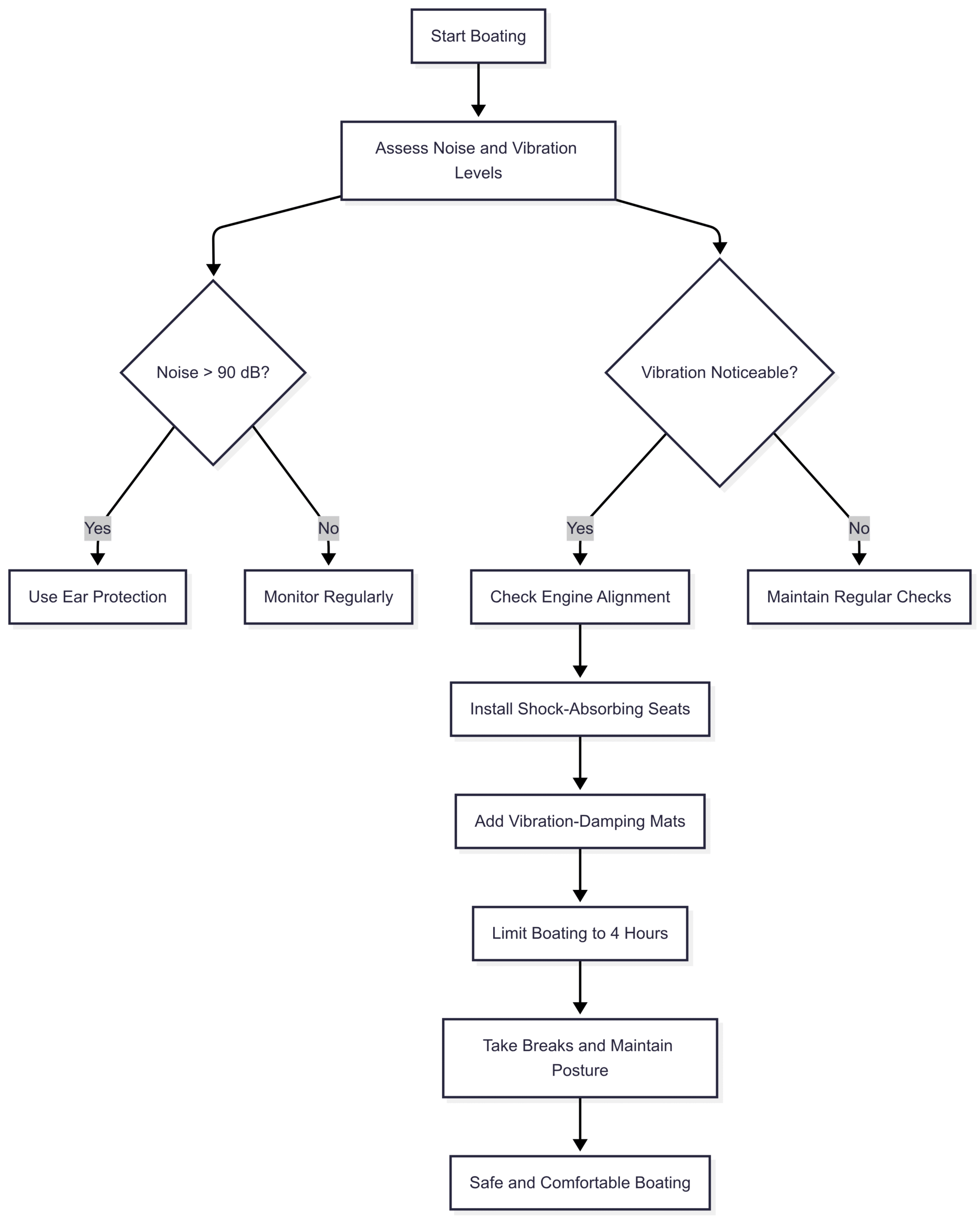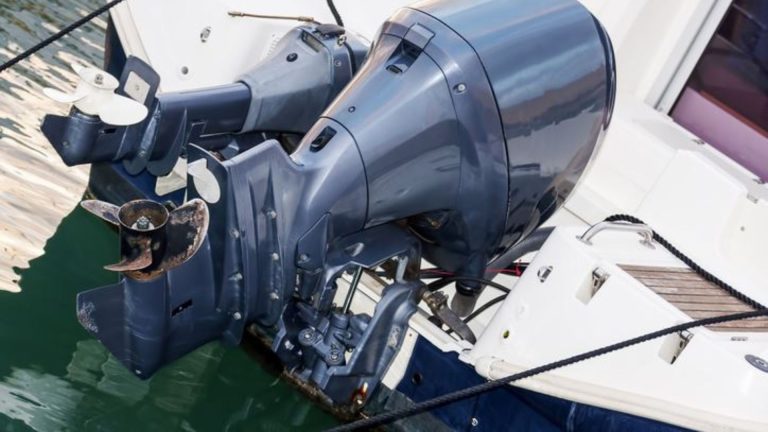Noise And Vibration When Operating Boat
Learn how noise and vibration affect boat operators, their health impacts, and practical solutions to reduce risks for safer boating.
Boating is a cherished activity for millions worldwide, offering freedom, adventure, and a unique connection with nature. Whether you’re an angler chasing the next big catch, a leisure boater enjoying a day on the water, or a professional navigating open seas, the experience is exhilarating. However, beneath the thrill lies a less-discussed challenge: the constant noise and vibration generated by a boat. These elements, often dismissed as mere byproducts of motorized vessels, can significantly affect a boater’s physical and mental well-being. Over time, they contribute to fatigue, reduced alertness, and even long-term health issues, increasing the risk of accidents. This comprehensive guide explores the sources, effects, and practical solutions for managing noise and vibration when operating a boat, ensuring safer and more comfortable experiences on the water.
Understanding Noise and Vibration in Boating
Boating is rarely a silent or smooth affair. Even on calm waters with ideal conditions, a boat generates noise and vibration from various sources. These disturbances are not just nuisances—they can impact your health, performance, and safety. To address them effectively, it’s essential to understand their origins.
Sources of Noise and Vibration
- Engine Noise and Vibration
The heart of any motorized boat is its engine, which produces both sound and mechanical vibrations. Whether powered by gasoline or diesel, engines generate noise through combustion and mechanical movement. Diesel engines, in particular, tend to produce higher levels of noise and vibration due to their combustion process, where the crankshaft’s motion creates significant tremors. Poorly maintained engines or misaligned shafts exacerbate these issues, transmitting vibrations throughout the vessel. - Wind Noise
Open-helm boats expose operators to wind noise, which becomes more pronounced at higher speeds or in windy conditions. This constant auditory assault can overwhelm the senses, making it harder to focus on navigation or detect other sounds, such as approaching vessels or environmental cues. - Water Impact on the Hull
As a boat moves through the water, waves striking the hull create vibrations and noise. In rough waters, these impacts are more intense, sending repetitive jolts through the boat’s structure and into the bodies of its occupants. The resistance of the hull against waves amplifies these effects, particularly at high speeds. - Other Equipment
Beyond the engine, other onboard equipment like pumps, compressors, or even loose fuel tanks can contribute to noise and vibration. Misaligned or improperly secured components can intensify these disturbances, creating a compounding effect. - Boat Design and Materials
The construction of a boat plays a significant role in how vibrations are transmitted. Boats with rigid structures, such as those made of fiberglass or aluminum, often transfer vibrations directly to passengers, as they lack the flexibility to absorb shocks. Conversely, boats designed with vibration-damping materials can mitigate some of these effects.
The Science Behind Noise and Vibration
Noise is measured in decibels (dB), and prolonged exposure to levels above certain thresholds can cause harm. The Occupational Safety and Health Administration (OSHA) recommends a maximum noise exposure limit of 90 dB for an 8-hour period to prevent hearing damage. However, many boats, especially older models or those with diesel engines, can exceed this threshold, particularly at high speeds.
Vibration, on the other hand, is a mechanical oscillation that affects the body through direct contact with the boat’s surfaces. Whole-body vibration (WBV) occurs when these oscillations are transmitted to the body, impacting muscles, joints, and the spine. According to studies, prolonged exposure to WBV can lead to musculoskeletal disorders, fatigue, and reduced cognitive performance.
Below is a table summarizing common noise and vibration sources on boats and their typical impact levels:
| Source | Noise Level (dB) | Vibration Type | Primary Impact |
|---|---|---|---|
| Gasoline Engine | 85–95 | Mechanical Vibration | Hearing strain, fatigue |
| Diesel Engine | 90–100 | High-Frequency Vibration | Increased fatigue, musculoskeletal strain |
| Wind Noise | 70–90 | N/A | Reduced alertness, auditory overload |
| Water Impact on Hull | 80–95 | Whole-Body Vibration | Joint/spine strain, fatigue |
| Other Equipment (Pumps) | 75–85 | Localized Vibration | Distraction, minor fatigue |
The Physical and Mental Effects of Noise and Vibration
While noise and vibration may seem like minor inconveniences, their cumulative effects can be profound. Boaters often underestimate how these stressors, combined with environmental factors like sun exposure and wave motion, impact their physical and mental health. Below, we explore the most significant effects.
1. Fatigue and Reduced Alertness
Constant exposure to noise and vibration drains the body’s energy reserves. The muscles work continuously to stabilize the body against vibrations, leading to physical exhaustion. Simultaneously, loud noises overwhelm the auditory system, making it harder to concentrate on navigation or environmental cues. This dual assault reduces alertness, increasing the likelihood of missing critical signals, such as another boat’s horn or a change in water conditions.
2. Impaired Reaction Time
Fatigue and diminished alertness directly impair reaction time, which is critical in emergencies. For example, a delayed response to an obstacle in the water or a sudden change in weather could lead to collisions or other accidents. Studies show that prolonged exposure to noise levels above 85 dB can slow cognitive processing, further compounding this issue.
3. Hearing Damage
Exposure to noise levels above 90 dB for extended periods can cause permanent hearing loss or tinnitus (ringing in the ears). Boat engines, particularly diesel ones, often exceed this threshold, especially when operating at full throttle. Over time, repeated exposure without protection can lead to irreversible auditory damage.
4. Musculoskeletal Issues
Whole-body vibration is a significant concern for boaters. The repetitive jolts from waves and engine vibrations place strain on the spine, joints, and muscles. This can lead to lower back pain, shoulder stiffness, and knee discomfort. Long-term exposure may contribute to chronic conditions like degenerative disc disease or arthritis.
5. Psychological Effects
The constant barrage of noise and vibration can elevate stress levels, leading to anxiety, irritability, and even sleep disturbances after a day on the water. These psychological effects can persist, affecting overall well-being and reducing the enjoyment of boating.
6. Poor Circulation and Numbness
Prolonged exposure to vibrations can disrupt blood circulation, particularly in the extremities. Boaters may experience numbness or tingling in their hands or feet, which can impair fine motor skills needed for tasks like steering or handling equipment.
7. Amplified Effects of Alcohol and Drugs
Noise and vibration can exacerbate the impairing effects of alcohol or drugs. Even small amounts of these substances, when combined with the stressors of boating, can significantly reduce judgment and reaction time, increasing the risk of accidents.
8. Cumulative Impact
The combined effects of noise, vibration, sun exposure, and wave motion create a unique challenge for boaters. These stressors work together to accelerate fatigue, reduce performance, and heighten the risk of accidents. For example, a boater who is tired, less alert, and experiencing joint pain is far less equipped to handle an emergency than one who is well-rested and focused.
Practical Solutions to Minimize Noise and Vibration
While noise and vibration are inherent to boating, their impact can be significantly reduced through proactive measures. By addressing the sources and protecting yourself, you can enjoy safer and more comfortable boating experiences. Below are actionable solutions, supported by practical tools and strategies.
1. Regular Boat Maintenance
A well-maintained boat produces less noise and vibration. Key maintenance tasks include:
- Engine Alignment: Ensure the engine and shaft are properly aligned to minimize vibrations. Misalignment can cause excessive shaking, which is both uncomfortable and damaging to the vessel.
- Propeller Condition: Inspect and balance the propeller regularly. A damaged or unbalanced propeller amplifies vibrations.
- Lubrication: Properly lubricate moving parts to reduce friction and noise.
- Equipment Checks: Secure loose components like pumps or fuel tanks to prevent additional vibrations.
Regular maintenance not only reduces noise and vibration but also extends the lifespan of your boat. Schedule professional inspections at least annually or before long trips.
2. Invest in Shock-Absorbing Seating
One of the most effective ways to reduce the impact of vibrations is to invest in high-quality, shock-absorbing seats. These seats are designed with advanced suspension systems that absorb shocks from waves and engine vibrations, protecting your spine and joints. Brands like Smooth Moves and Shockwave offer seats with adjustable suspension systems tailored for marine environments.
Example Product Specifications:
| Product | Features | Price Range |
|---|---|---|
| Smooth Moves Ultra | Adjustable air suspension, ergonomic design | $1,200–$1,800 |
| Shockwave S5 Sentinel | Shock mitigation system, corrosion-resistant | $1,500–$2,200 |
These seats are an investment in both comfort and long-term health, making them a worthwhile addition for frequent boaters.
3. Use Vibration-Damping Materials
Many modern boats incorporate vibration-damping materials, such as rubber or foam linings, to reduce the transmission of noise and vibration. If your boat lacks these features, consider retrofitting it with anti-vibration mats or pads. These are particularly effective for standing areas like decks or helm stations.
Example Products:
| Product | Material | Application | Price Range |
|---|---|---|---|
| SeaDek EVA Foam Mats | EVA Foam | Deck, helm padding | $50–$200 |
| Dynamat Xtreme | Butyl Rubber | Engine compartment lining | $100–$300 |
4. Wear Proper Ear Protection
To protect against hearing damage, use high-quality earplugs or earmuffs designed for marine environments. Look for products with a Noise Reduction Rating (NRR) of at least 20 dB to effectively block harmful noise levels.
Recommended Ear Protection:
| Product | NRR | Price |
|---|---|---|
| 3M Peltor X-Series Earmuffs | 31 dB | $25–$40 |
| Mack’s Ultra Soft Earplugs | 32 dB | $10–$15 |
5. Limit Boating Duration
To minimize fatigue and maintain alertness, limit continuous boating to 4 hours or less. Prolonged exposure increases the risk of physical and mental exhaustion. Take regular breaks to stretch, hydrate, and rest, allowing your body to recover from the constant stressors.
6. Reduce Speed in Rough Waters
High speeds in choppy waters amplify vibrations and jolts. Slowing down reduces the intensity of impacts, making the ride smoother and less taxing on your body. Prioritize comfort over speed, especially in rough conditions.
7. Distribute Weight Evenly
Uneven weight distribution can cause the boat to list or vibrate excessively. Secure cargo and distribute passengers evenly to stabilize the vessel. Place heavy items near the center to minimize shaking.
8. Improve Posture and Stance
Proper posture reduces the strain of vibrations on your body. When seated, sit upright with your back supported. When standing, maintain a slight bend in your knees to absorb shocks naturally. Avoid slouching, as it increases the impact on your spine and joints.
9. Avoid Alcohol and Drugs
The effects of alcohol and drugs are amplified by noise, vibration, and other boating stressors. Even small amounts can impair judgment and reaction time, increasing the risk of accidents. Stay sober to maintain full control of your vessel.
10. Monitor Noise Levels
Use a decibel meter to measure noise levels on your boat. Compare readings at idle and full throttle to ensure they remain within safe limits (below 90 dB). Affordable decibel meters are available for as little as $20–$50 and can be a valuable tool for assessing risk.
Chart: Noise and Vibration Mitigation Workflow

The Importance of Proactive Management
Noise and vibration are inevitable aspects of boating, but their effects can be managed with the right strategies. By understanding their sources—engines, wind, water impacts, and equipment—you can take targeted steps to minimize their impact. Regular maintenance, proper equipment, and mindful boating practices not only enhance comfort but also protect your long-term health.
Boating should be a source of joy, not physical or mental strain. Whether you’re upgrading your seating, monitoring noise levels, or simply taking breaks, every step you take contributes to a safer and more enjoyable experience. By prioritizing these solutions, you’ll ensure that your time on the water remains a healthy and fulfilling adventure.
Key Takeaways
- Sources: Engine noise, wind, water impacts, and boat design contribute to noise and vibration.
- Effects: Fatigue, reduced alertness, hearing damage, musculoskeletal issues, and psychological stress.
- Solutions: Regular maintenance, shock-absorbing seats, ear protection, vibration-damping materials, and limited boating durations.
- Safety: Avoiding alcohol, maintaining posture, and monitoring noise levels reduce risks.
By implementing these strategies, you can protect your body, stay alert, and fully enjoy the pleasures of boating. Happy and safe boating!
Share Noise And Vibration When Operating Boat with your friends and Leave a comment below with your thoughts.
Read How Fast Are Speed Boats: Speed Boating Performance Guide until we meet in the next article.






